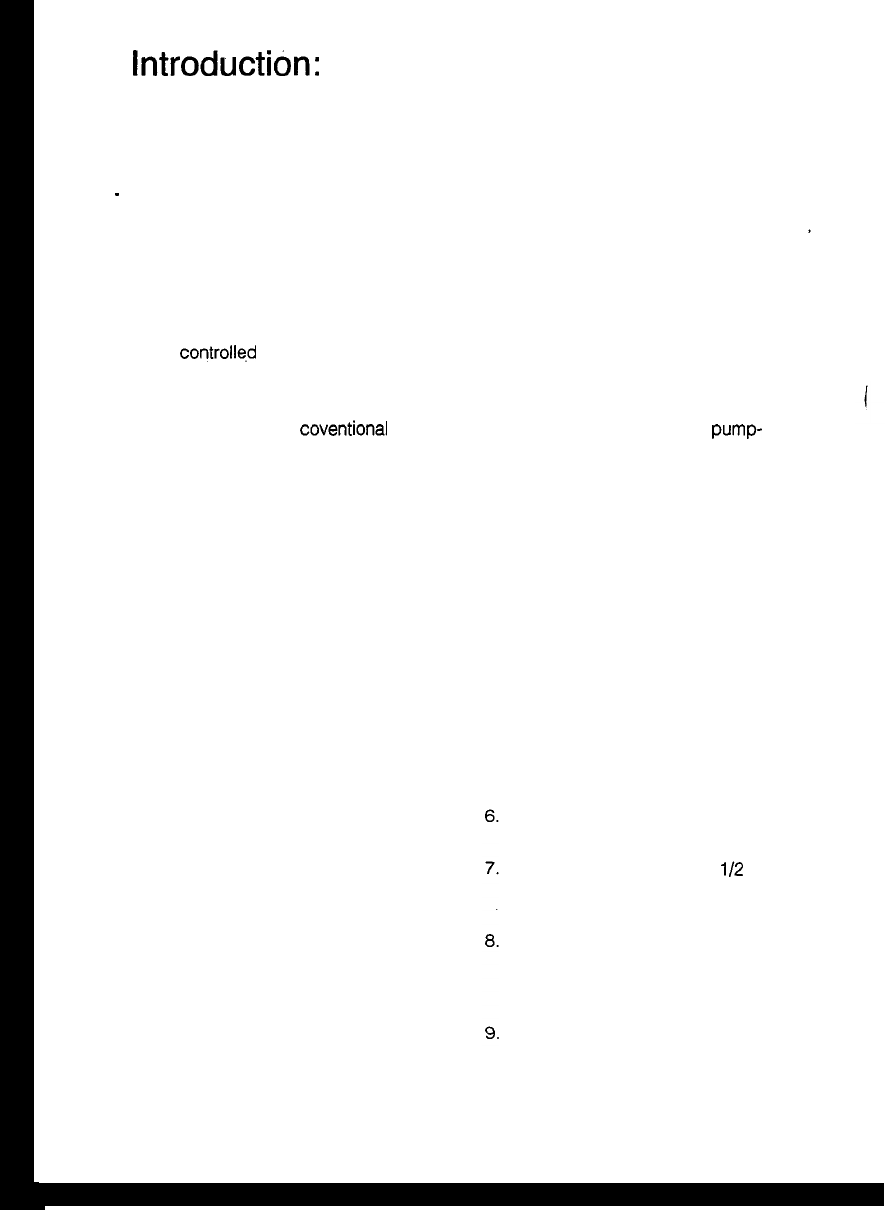
Introductbn:
As the proud owner or the Gaggia
Baby,.you can now experience the
taste of a delicious cup of espresso or
cappuccino in the comfort of your own
home. Congratulations on making a
.
wise decision!
Espresso coffee, originally created in
Italy, is made by rapidly forcing water
that has been heated to the correct
brewing temperature, through a special
finely ground coffee. The heart of the
Baby Gaggia is a precision engineered
pump. The pump and water flow is
easily
control1e.d
with just a flick of the
switch.
Making espresso or cappuccino is very
different from using a coventional
coffee maker. The Baby Gaggia’
operates with pressure and steam and
it is, therefore, important to read all the
instructions before using. Become
familiar with all parts of the machine
before operating the unit.
Important to know...
1. The taste of your coffee depends on
the characteristics of the beans from
which it is made, the type of bean,
where it was grown and processed.
The special flavor of a coffee bean is
determined by many factors, but its
taste and aroma are the result of the
roasting process. Most coffees
purchased from the supermarket are
roasted to a moderate degree.
Those beans are light in color and
have a dry, rather than an oily
surface. This is known as the
American roast (in USA).
The coffee beans that are roasted
for a longer period of time and at
higher temperatures will be much
darker in color. Darker beans wilt
produce a more flavorful cup of
coffee than the lightly-roasted
beans.
2. A variety of dark roasts is available
from which you can choose to brew
your espresso. Examples: Vienna
roast, French roast, Italian roast, etc.
Each of these roasts is a blend of
coffee beans that are roasted at a
specific temperature producing a
specific type of flavor.
There are decaffeinated beans that
have up to 98% of the caffeine
content removed..
The next time you purchase coffee
for your espresso maker, experiment
with one of the many kinds of coffee
being sold. You may just find that it
tastes better than the blend you
have been using.
3. A fine “espresso grind” for
pump-
driven machines must be used. Be
sure to ask for this when buying
coffee or when having beans ground.
Do not use a blade-type grinder
because it makes too much coffee
dust and produces an irregular grind.
4. The mark of real espresso is its dark
color, rich taste and the light
brown, natural froth called “crema” in
Italian.
5. Cappuccino is simply a combination
of espresso and hot, frothy milk.
Equal amounts of espresso, froth
and hot milk are recommended.
Cappuccino is usually topped with
cinnamon, nutmeg or chocolate
shavings.
Espresso Coffee should be served
immediately after it is made.
Espresso is served in 2 to 2
l/2
oz.
demitasse cups. A 4 or 6 oz. cup or
glass is used for cappuccino.
Ideally, coffee beans should be
ground immediately before using.
Remember, it must be an “espresso
grind” for pump-driven machines.
It’s best to store ground coffee or
beans in an airtight container in the
freezer of your refrigerator. Ground
coffee readily picks up food flavors.












